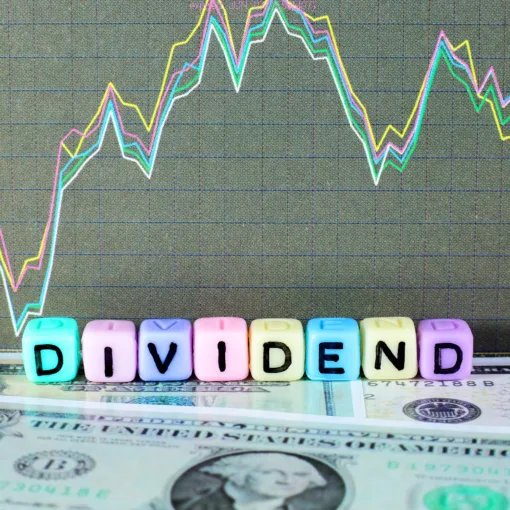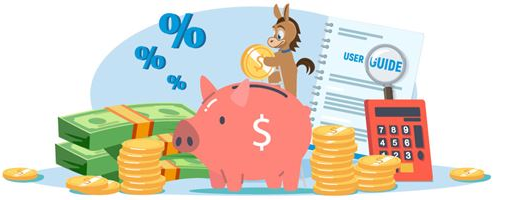Understanding economic indicators is critical in today’s fast-paced global economy for individuals, corporations, and politicians alike. These indicators are key indications of a country’s economic health, allowing us to assess its performance, stability, and possible risks. We will go deep into the realm of economic indicators in this thorough guide, studying their types, top key economic indicators, and why they are so significant.

Introduction
Economic indicators, in general, are statistical data points that provide insight about the economic performance of a country. They allow us to analyze an economy’s overall health and direction. In this article, we will define economic indicators, discuss their many sorts, dig into several major indicators, and emphasize their critical relevance.
Understanding Economic Indicators
Definition of Economic indicators. What Are Economic Indicators?
Economic indicators are defined as a set of metrics or data points that are used to indicate various elements of the economic health of an economy. They help us understand how an economy is performing and whether it is expanding or decreasing. These indicators consist of a wide variety of information, from employment numbers to inflation rates, and are considered as critical tools for understanding economic trends.
Why Are Economic Indicators Important?
Economic indicators are important for many reasons. They share valuable information for decision-making, risk assessment, and policy formulation. Businesses, investors, and governments depend on them to plan for the future, Investors rely on them for investment strategies, and governments depend on them to shape economic policies.
Here are a few high-level points signifying the importance of economic indicators, with examples:
- Enable Measuring Economic Health: Economic indicators are like a thermometer for an economy, allowing us to gauge its overall health. Just as a rising fever indicates illness, certain indicators can signify economic troubles. For example, a declining Gross Domestic Product (GDP) suggests an economic downturn, as was the case during the 2008 financial crisis.
- Help in Predicting Trends: Economic indicators are not just about reporting the past; they also serve as crystal balls for the future. Leading indicators, such as the Purchasing Managers’ Index (PMI), provide early signals of economic trends. When the PMI of a country’s manufacturing sector rises, it may indicate increased production and potentially higher economic growth.
- Enable Informed Decision-Making: For businesses, these indicators are indispensable in decision-making. Let’s say a car manufacturer monitors auto sales data. If they notice a consistent decline in sales, they might slow down production to avoid overstocking, saving costs and resources.
- Share Investment Insights: Investors base their decisions on economic indicators. Take the unemployment rate, for instance. A falling unemployment rate often corresponds with a healthy economy. Investors may respond by increasing their investments in stocks, expecting strong corporate earnings.
- Support in Policy Formulation: Governments and central banks actively use these indicators to formulate policies. If inflation is rising, a central bank might increase interest rates to curb it, as was seen when the U.S. Federal Reserve raised rates in response to inflation concerns.
- Help in Job Market Evaluation: The job market is a cornerstone of economic well-being. The U.S. Bureau of Labor Statistics regularly publishes the non-farm payroll employment data. An increase in non-farm payrolls indicates job growth and is often seen as a positive sign for the economy.
- Ensures Price Stability: Inflation indicators like the Consumer Price Index (CPI) help maintain price stability. If the CPI rises too quickly, it erodes consumers’ purchasing power. This was evident in hyperinflation scenarios like Zimbabwe in the late 2000s.
- Enhances Consumer Confidence: Consumer sentiment surveys measure public perception of the economy. High confidence typically leads to increased consumer spending. For instance, during a period of high consumer confidence, people may be more inclined to make significant purchases, such as cars or homes, driving economic growth.
- Help in Risk Assessment: These indicators provide valuable information for assessing risks. During times of economic uncertainty, investors often flock to safe-haven assets like gold or government bonds, based on indicators signaling potential market turbulence.
- Enable Global Trade: International trade depends on economic indicators. A country with strong economic growth may see increased demand for its exports. Conversely, a country with a weakening economy might reduce imports to conserve resources.
- Support in Real Estate Decisions: Indicators such as housing starts and home sales profoundly impact real estate decisions. High housing starts suggest a growing demand for homes, which can affect property prices and construction industry investments.
- Support in Budget Planning: Governments use economic indicators to allocate resources effectively. A country with a robust economy can allocate more funds to social programs and infrastructure development.
- Enhances Investor Confidence: Reliable economic indicators build investor confidence. For example, a country with transparent and accurate economic data is more likely to attract foreign investments, as investors feel assured about the stability of the economic environment.
- Economic Education: Economic indicators are vital for economic literacy. Understanding them empowers individuals to navigate the economic landscape effectively. For example, knowledge of indicators can help someone make informed decisions about saving, investing, or budgeting.
These indicators are the most important signals for economic analysis and decision-making. They provide the data and insights needed to understand economic conditions, predict future trends, and make informed decisions in various sectors starting from business and investments to government policy and even personal finance.
Types of Economic Indicators
A substantial portion of economics is concerned with numbers. In reality, if you have the appropriate formula and enough data, you can solve a lot of economic problems. Fortunately, there is no scarcity of information available these days. Every week, government agencies and private organizations release dozens of economic data and indicators. The majority of them are open to the public and can be utilized for study.
Of course, not all of this information is applicable to everyone. There are several signs that should be considered depending on the relevant topic or situation. Nonetheless, economic indicators are classified into three sorts based on their timing: leading indicators, lagging indicators, and coincident indicators. Let’s take a closer look at them.
Economic indicators can be classified into three main types, each serving a unique purpose in providing insights into the state of an economy. Let’s explore these types in detail, along with real-life examples to illustrate their significance:
Leading Economic Indicators
There are certain indicators which are forward-looking metrics and provide early signals about the direction of a country’s economy. This type of indicators are Leading Indicators. They are valuable for predicting future economic trends. Few examples of the leading indicators are stock market performance, building permits, and consumer confidence. Investors and policymakers closely monitor leading indicators to anticipate economic trends.
Examples of Leading Indicators
- Stock Market Indices: Stock market performance is often considered as one of the leading indicator. Usually, when we observe some popular stock indices, such as the S&P 500 or the Dow Jones Industrial Average showing sustained gains, it may imply optimism about future corporate earnings and economic growth. Conversely, a prolonged stock market decline can signal potential economic troubles.
- Consumer Confidence Index: This index is considered as a measure of the consumers’ confidence in the economy’s future prospects. When it is observed that the consumer confidence is high, it imply that people are optimistic about their financial well-being which will increase their likelihood of spending. This in turn boosts economic growth.
- Building Permits: The number of building permits issued for new construction projects can be a leading indicator for the housing market and, by extension, the broader economy. An increase in building permits may signal future economic expansion as it suggests growing investment in real estate.
Lagging Economic Indicators
These types of indicators collectively provide a comprehensive picture of an economy’s past, present, and future performance, helping individuals, businesses, and policymakers make informed decisions and respond to economic developments effectively.
Lagging indicators, on the other hand, confirm trends that have already occurred. These indicators include metrics like the unemployment rate and corporate profits. They are used to validate and support existing economic data.
Lagging indicators confirm trends that have already occurred, providing validation and support for existing economic data. They are helpful for assessing the impact of recent events.
Examples of Lagging Indicators
- Unemployment Rate: The unemployment rate is a lagging indicator as it reflects past employment trends. A rising unemployment rate is an aftermath of economic downturns, indicating that businesses have already reduced their workforce.
- Corporate Profits: The financial performance of companies is often considered a lagging indicator. When corporate profits decline over several quarters, it can indicate that the economy has been slowing down or experiencing difficulties.
- Interest Rates: Changes in interest rates by central banks typically follow economic events. For instance, a central bank may lower interest rates in response to an economic recession to stimulate borrowing and spending.
Coincident Economic Indicators
Coincident indicators move in tandem with the economy and provide real-time information about its current state. They are helpful for assessing the economy’s present health. Coincident indicators move in conjunction with the economy and reflect its current state. They provide real-time information about the economy’s health.
Examples of Coincident Indicators
- Industrial Production Index (IPI): The IPI measures changes in the production of industrial goods. A rising IPI suggests that manufacturing activity is increasing, which is a sign of a healthy economy.
- Retail Sales: Retail sales data provides insights into consumer spending habits. When retail sales are strong, it indicates that consumers are actively contributing to economic growth.
- Gross Domestic Product (GDP): While GDP can be a lagging or coincident indicator depending on the reporting frequency, it offers a comprehensive view of an economy’s current state. A growing GDP suggests economic expansion, while a declining GDP signals contraction.
Real-life examples underscore the importance of these indicators. For instance, during the 2008 financial crisis, the leading indicator of declining housing construction permits in the United States foreshadowed the subsequent housing market collapse. The lagging indicator of rising unemployment rates followed as a result of layoffs and business closures. Coincident indicators like a sharp drop in retail sales and a contracting GDP confirmed the severity of the economic downturn.
Key Economic Indicators
Economic indicators are the essential tools used to assess the health and performance of an economy. They provide valuable information about various aspects of economic activity and can help policymakers, businesses, and investors make informed decisions. Here are some key economic indicators:
Gross Domestic Product (GDP)
GDP measures the total value of all goods and services produced within a country’s borders over a specific period. It is a fundamental indicator of economic size and growth.
Unemployment Rate
The unemployment rate indicates the percentage of the labor force that is actively seeking employment but is currently without a job. It reflects the health of the job market.
Inflation Rate
Inflation measures the rate at which the general price level of goods and services rises, leading to a decrease in purchasing power. Moderate inflation is generally considered healthy for an economy, but high or hyperinflation can be problematic.
Consumer Price Index (CPI)
The CPI tracks changes in the prices of a basket of consumer goods and services over time. It is a common measure of inflation’s impact on consumer expenses.
Producer Price Index (PPI)
The PPI monitors changes in the prices of goods and services at the producer level, providing insights into potential future inflation trends.
Balance of Trade
This indicator measures the difference between a country’s exports and imports. A positive balance of trade (surplus) occurs when exports exceed imports, while a negative balance (deficit) indicates the opposite.
Retail Sales
Retail sales data reveal the total value of goods sold by retailers in a specific period. It reflects consumer spending patterns and economic sentiment.
Industrial Production
This indicator measures the output of manufacturing, mining, and utilities sectors. It provides insights into the health of the industrial segment of the economy.
Consumer Confidence Index
Consumer confidence surveys gauge the optimism or pessimism of consumers regarding the state of the economy. High consumer confidence often leads to increased spending.
Business Confidence Index
Similar to consumer confidence, this index reflects the sentiment of business executives and their outlook on economic conditions. It can influence business investment decisions.
Housing Starts
This indicator tracks the number of new residential construction projects initiated in a given period. It provides insights into the housing market’s health and can signal broader economic trends.
Interest Rates
Central banks set interest rates, which can influence borrowing costs, spending, and investment. Changes in interest rates can impact economic activity.
Government Debt
The level of government debt as a percentage of GDP can indicate the fiscal health of a nation. High levels of debt may lead to concerns about sustainability and economic stability.
Stock Market Indices
Stock market performance, such as the S&P 500 or Dow Jones Industrial Average, can provide insights into investor sentiment and confidence in the economy.
Currency Exchange Rates
Exchange rates reflect the relative value of one currency compared to another. They can affect international trade and investment.
Pros and Cons of Economic Indicators
The pros and cons of economic indicators are as described in below table. We hope this will share concise understanding as per different aspects of Economic Indicators.
| Aspect | Pros | Cons |
|---|---|---|
| Reliability | – Economic indicators are typically sourced from reputable government agencies or organizations, providing objective and credible data for analysis. | – Data revisions can occur, which may lead to adjustments in previously reported figures and affect decision-making. |
| – Historical data is available, allowing for trend analysis and comparisons over time. | – Some indicators may have a lag in data release, making real-time decision-making challenging. | |
| – The reliability of economic indicators enhances their value in guiding policy and business decisions. | – Some specific indicators, such as new economic phenomena, may lack sufficient historical data for meaningful analysis. | |
| Informativeness | – Economic indicators offer valuable insights into the overall health of an economy, including key aspects like employment, inflation, and GDP. | – Interpretation can be complex due to the interplay of multiple factors influencing economic data, requiring expertise. |
| – They aid decision-makers in making informed choices about investments, hiring, and strategic planning. | – Certain economic indicators focus on specific aspects of the economy, making them less comprehensive in assessing overall health. | |
| – Tracking trends and economic cycles is made possible, enabling better preparation for economic fluctuations. | – Economic indicators can be influenced by external factors, making them less reliable in isolation. | |
| Predictive Power | – Economic indicators are used extensively for economic forecasting, helping businesses and policymakers anticipate trends and potential risks. | – The accuracy of predictions varies, and unforeseen events or changes in data can lead to inaccuracies. |
| – They inform market analysis, providing valuable information for investment strategies and risk management. | – Sudden economic shocks, like financial crises or natural disasters, may not be adequately anticipated by indicators. | |
| Policy Influence | – Economic indicators guide government policy decisions by providing data on key economic metrics, influencing taxation, spending, and regulatory actions. | – Overreliance on these indicators can lead to policy errors if policymakers do not consider broader economic contexts and qualitative data. |
| – They play a role in monetary policy decisions by central banks, affecting interest rates and money supply. | – There can be a time lag between implementing policy changes and observing their full impact on the economy. | |
| Market Impact | – These indicators have the power to affect investor confidence. Positive indicators can boost sentiment, while negative ones can trigger market reactions. | – Market reactions to economic indicators are not always rational and can lead to price volatility or speculative behavior. |
| – They reflect overall economic sentiment, influencing investment decisions and market behavior. | – Herd behavior in financial markets can occur, where investors follow trends driven by the reaction to economic indicators, potentially leading to bubbles or crashes. | |
| Global Comparisons | – Economic indicators enable international comparisons, allowing countries to assess their relative economic strength and performance. | – Differences in data collection methods and definitions can make cross-country comparisons less precise and accurate. |
| – They help countries gauge their competitiveness on the global stage and make informed policy decisions. | – Currency fluctuations can distort economic data, impacting the accuracy of international comparisons. |
The above table shares a comprehensive understanding of the advantages and disadvantages associated with economic indicators in different contexts.
If you are interesting in knowing how to start investing, you can always checkout this post: How To Start Investing in 2023? 7 Best investment Options
End Notes
In conclusion, economic indicators are invaluable tools for understanding the complex world of economics. They come in various forms, from leading to lagging indicators, and play a critical role in decision-making for businesses, investors, and governments. By analyzing these indicators, we gain valuable insights into economic trends and can better navigate the ever-changing economic landscape.
Frequently Asked Questions (FAQs)
1. What are economic indicators?
Economic indicators are data points that provide insights into an economy’s performance and direction.
2. What are the leading economic indicators?
Leading indicators are the indicators that predict future developments. That is, they frequently alter before economic conditions do. This makes them particularly valuable for forecasting short-term economic trends.
2. Why are economic indicators important?
Economic indicators are important because they help individuals, businesses, and governments make informed decisions, assess risks, and formulate policies.
3. What are the three types of economic indicators?
Three major types of economic indicators are leading economic indicators, lagging economic indicators and coincident economic indicators.
3. What are some key economic indicators?
Key economic indicators include GDP, unemployment rate, inflation rate, consumer price index, and industrial production index.
4. How do economic indicators impact financial markets?
Economic indicators can significantly influence stock, forex, and commodity markets.



